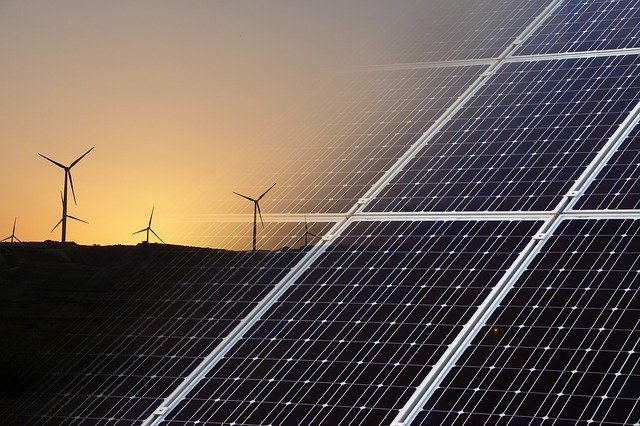Clean Energy Storage: Empowering Renewable Energy’s Potential
Clean energy storage plays a crucial role in overcoming the challenges associated with renewable energy sources. As the world increasingly shifts towards sustainable energy generation, the intermittent nature of renewable sources such as solar and wind poses significant obstacles. The ability to store excess energy during periods of high generation and release it during times of low generation is essential for a reliable and stable energy supply. However, developing efficient and cost-effective energy storage technologies remains a significant challenge. This article explores the challenges of renewable energy storage and the ongoing efforts to overcome them.
The Importance of Energy Storage in Harnessing Renewable Sources
Clean Energy Storage: Overcoming the Challenges of Renewable Energy
The world is facing an urgent need to transition from fossil fuels to renewable energy sources. As the effects of climate change become increasingly apparent, governments, businesses, and individuals are recognizing the importance of harnessing clean energy. However, one of the biggest challenges in this transition is the intermittent nature of renewable energy sources. Solar panels only generate electricity when the sun is shining, and wind turbines only produce power when the wind is blowing. This variability makes it difficult to rely solely on renewable energy to meet our energy needs.
This is where energy storage comes in. Energy storage technologies allow us to capture and store excess energy generated by renewable sources during times of high production and use it when demand is high but production is low. By storing energy, we can ensure a steady and reliable supply of electricity, even when the sun isn’t shining or the wind isn’t blowing.
The importance of energy storage in harnessing renewable sources cannot be overstated. It not only helps to address the intermittency issue but also provides a range of other benefits. Firstly, energy storage can help to stabilize the grid. By storing excess energy during times of low demand and releasing it during times of high demand, energy storage systems can help to balance the supply and demand of electricity, reducing the risk of blackouts and ensuring a more reliable power supply.
Secondly, energy storage can help to integrate more renewable energy into the grid. As the share of renewable energy sources increases, the need for energy storage becomes even more critical. By storing excess energy, we can avoid curtailment, which is the wasteful practice of shutting down renewable energy sources when there is no immediate demand. Instead, we can store the excess energy and use it later, maximizing the utilization of renewable resources.
Furthermore, energy storage can also help to reduce the need for expensive and polluting peaker plants. Peaker plants are typically used to meet peak demand periods when electricity consumption is at its highest. However, these plants are often powered by fossil fuels and emit large amounts of greenhouse gases. By using energy storage instead, we can reduce our reliance on peaker plants and further reduce our carbon footprint.
Despite the numerous benefits of energy storage, there are still challenges that need to be overcome. One of the main challenges is the cost. Energy storage technologies can be expensive to implement, making it difficult for some regions and countries to adopt them on a large scale. However, as technology advances and economies of scale are realized, the cost of energy storage is expected to decrease, making it more accessible to a wider range of users.
Another challenge is the limited storage capacity. While energy storage technologies have come a long way, there is still a need for further research and development to improve their capacity and efficiency. This will allow us to store larger amounts of energy for longer periods, ensuring a more reliable and sustainable energy supply.
In conclusion, energy storage plays a crucial role in overcoming the challenges of renewable energy. It helps to address the intermittency issue, stabilize the grid, integrate more renewable energy, and reduce reliance on polluting peaker plants. While there are still challenges to overcome, the importance of energy storage in harnessing renewable sources cannot be ignored. As we continue to invest in research and development, we can expect to see even greater advancements in energy storage technologies, paving the way for a cleaner and more sustainable future.
Innovative Technologies for Efficient Clean Energy Storage
Clean Energy Storage: Overcoming the Challenges of Renewable Energy
Innovative Technologies for Efficient Clean Energy Storage
Renewable energy sources such as solar and wind power have gained significant traction in recent years as the world seeks to reduce its reliance on fossil fuels. However, one of the biggest challenges facing the widespread adoption of renewable energy is the issue of energy storage. Unlike traditional power sources, renewable energy is intermittent, meaning it is not always available when needed. This is where innovative technologies for efficient clean energy storage come into play.
One of the most promising technologies in this field is battery storage. Batteries have long been used to store energy, but recent advancements have made them more efficient and cost-effective. Lithium-ion batteries, for example, have become the go-to choice for many applications, from electric vehicles to grid-scale storage. These batteries can store large amounts of energy and discharge it when needed, helping to bridge the gap between energy generation and demand.
Another technology that shows great promise is pumped hydro storage. This method involves using excess energy to pump water uphill into a reservoir. When energy is needed, the water is released, flowing downhill and turning turbines to generate electricity. Pumped hydro storage has been used for decades and is currently the most widely deployed form of energy storage. However, it requires specific geographical features, such as mountains and large bodies of water, limiting its applicability.
In recent years, researchers have also been exploring the potential of thermal energy storage. This technology involves storing excess energy in the form of heat and releasing it when needed. One example of this is concentrated solar power, where mirrors focus sunlight onto a receiver, heating a fluid that can be stored and used to generate electricity later. Thermal energy storage has the advantage of being able to store energy for long periods without significant losses, making it ideal for certain applications.
In addition to these technologies, there are also emerging solutions that hold great promise. One such solution is hydrogen storage. Hydrogen can be produced using excess renewable energy and stored for later use. When needed, the hydrogen can be converted back into electricity through fuel cells. While hydrogen storage is still in its early stages, it has the potential to play a significant role in the future of clean energy storage.
Despite the progress made in clean energy storage technologies, there are still challenges that need to be overcome. One of the main challenges is cost. While the cost of renewable energy generation has been steadily decreasing, the cost of energy storage remains relatively high. This is particularly true for technologies such as lithium-ion batteries, which rely on expensive materials. Finding ways to reduce the cost of energy storage will be crucial for the widespread adoption of renewable energy.
Another challenge is scalability. While some energy storage technologies, such as pumped hydro storage, can be deployed at a large scale, others are still in the early stages of development. Scaling up these technologies to meet the demands of a renewable energy-powered grid will require further research and investment.
In conclusion, innovative technologies for efficient clean energy storage are essential for overcoming the challenges of renewable energy. Battery storage, pumped hydro storage, thermal energy storage, and hydrogen storage are all promising solutions that can help bridge the gap between energy generation and demand. However, there is still work to be done to reduce costs and scale up these technologies. With continued research and investment, clean energy storage can become a reality, paving the way for a more sustainable future.
Addressing the Economic and Policy Challenges of Renewable Energy Storage
Clean Energy Storage: Overcoming the Challenges of Renewable Energy
Addressing the Economic and Policy Challenges of Renewable Energy Storage
Renewable energy sources such as solar and wind power have gained significant traction in recent years as the world seeks to transition away from fossil fuels. However, one of the biggest challenges facing the widespread adoption of renewable energy is the issue of energy storage. Unlike traditional power sources, renewable energy is intermittent, meaning it is not always available when needed. This is where energy storage comes into play, allowing excess energy to be stored and used during times of high demand or when renewable sources are not generating power.
One of the main challenges in implementing clean energy storage is the economic aspect. Traditional energy storage technologies, such as lithium-ion batteries, can be expensive to produce and maintain. This cost is often passed on to consumers, making renewable energy less competitive with fossil fuels. To overcome this challenge, governments and policymakers need to incentivize the development and deployment of clean energy storage technologies. This can be done through tax credits, grants, and other financial incentives that encourage investment in research and development.
Another economic challenge is the lack of a clear business model for energy storage. Unlike traditional power plants, which generate revenue by selling electricity, energy storage systems do not have a direct revenue stream. This makes it difficult for investors to recoup their initial investment and hinders the growth of the clean energy storage industry. To address this, policymakers need to create a regulatory framework that allows energy storage systems to participate in electricity markets and receive compensation for the services they provide. This could include mechanisms such as capacity payments or market-based incentives that reward energy storage for its ability to provide reliable and flexible power.
In addition to economic challenges, there are also policy barriers that need to be addressed. One such barrier is the lack of standardized regulations for energy storage. Different countries and regions have different rules and regulations regarding the deployment and operation of energy storage systems. This lack of harmonization creates uncertainty for investors and hampers the growth of the clean energy storage industry. To overcome this, policymakers need to work together to develop common standards and regulations that facilitate the deployment of energy storage systems on a global scale.
Another policy challenge is the need for grid integration. Energy storage systems need to be seamlessly integrated into existing power grids to ensure a reliable and stable electricity supply. This requires coordination between energy storage operators, grid operators, and policymakers. It also requires investments in grid infrastructure to accommodate the increased deployment of energy storage systems. Governments and policymakers need to prioritize grid modernization and invest in smart grid technologies that can effectively manage the integration of renewable energy and energy storage.
In conclusion, addressing the economic and policy challenges of renewable energy storage is crucial for the widespread adoption of clean energy sources. Governments and policymakers need to incentivize the development and deployment of clean energy storage technologies through financial incentives. They also need to create a regulatory framework that allows energy storage systems to participate in electricity markets and receive compensation for the services they provide. Additionally, policymakers need to work together to develop common standards and regulations for energy storage and prioritize grid modernization to ensure the seamless integration of renewable energy and energy storage into existing power grids. By overcoming these challenges, we can unlock the full potential of renewable energy and pave the way for a sustainable and clean energy future.In conclusion, clean energy storage is crucial for overcoming the challenges of renewable energy. While renewable energy sources like solar and wind power are abundant and sustainable, their intermittent nature poses challenges for consistent power supply. Energy storage technologies, such as batteries, pumped hydro storage, and thermal storage, play a vital role in storing excess energy during peak production periods and releasing it during low production periods. However, there are still challenges to be addressed, including cost, scalability, and environmental impact. Continued research and development efforts are necessary to improve energy storage technologies and make them more efficient, affordable, and environmentally friendly. By overcoming these challenges, clean energy storage can help accelerate the transition to a sustainable and reliable renewable energy future.




